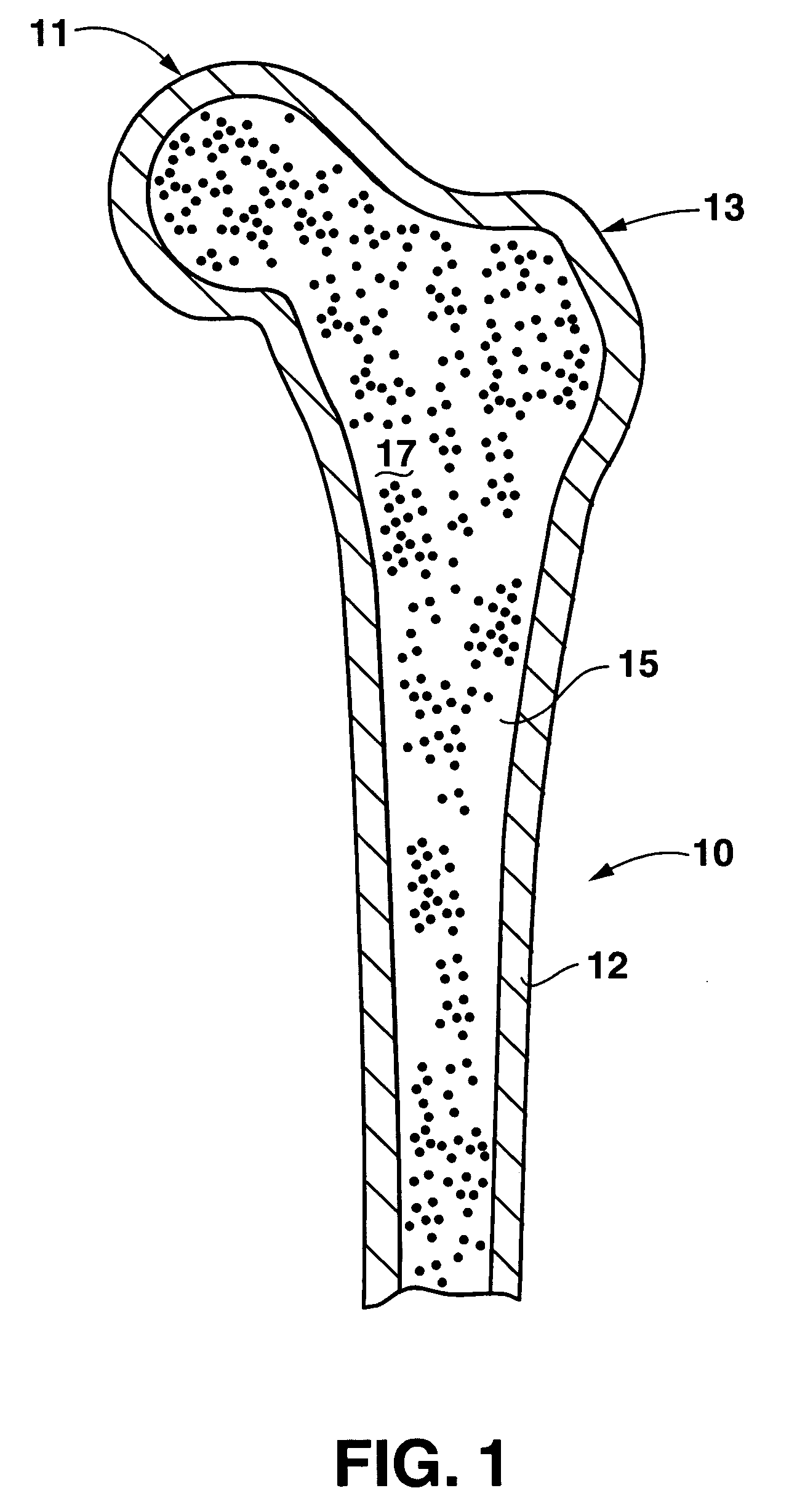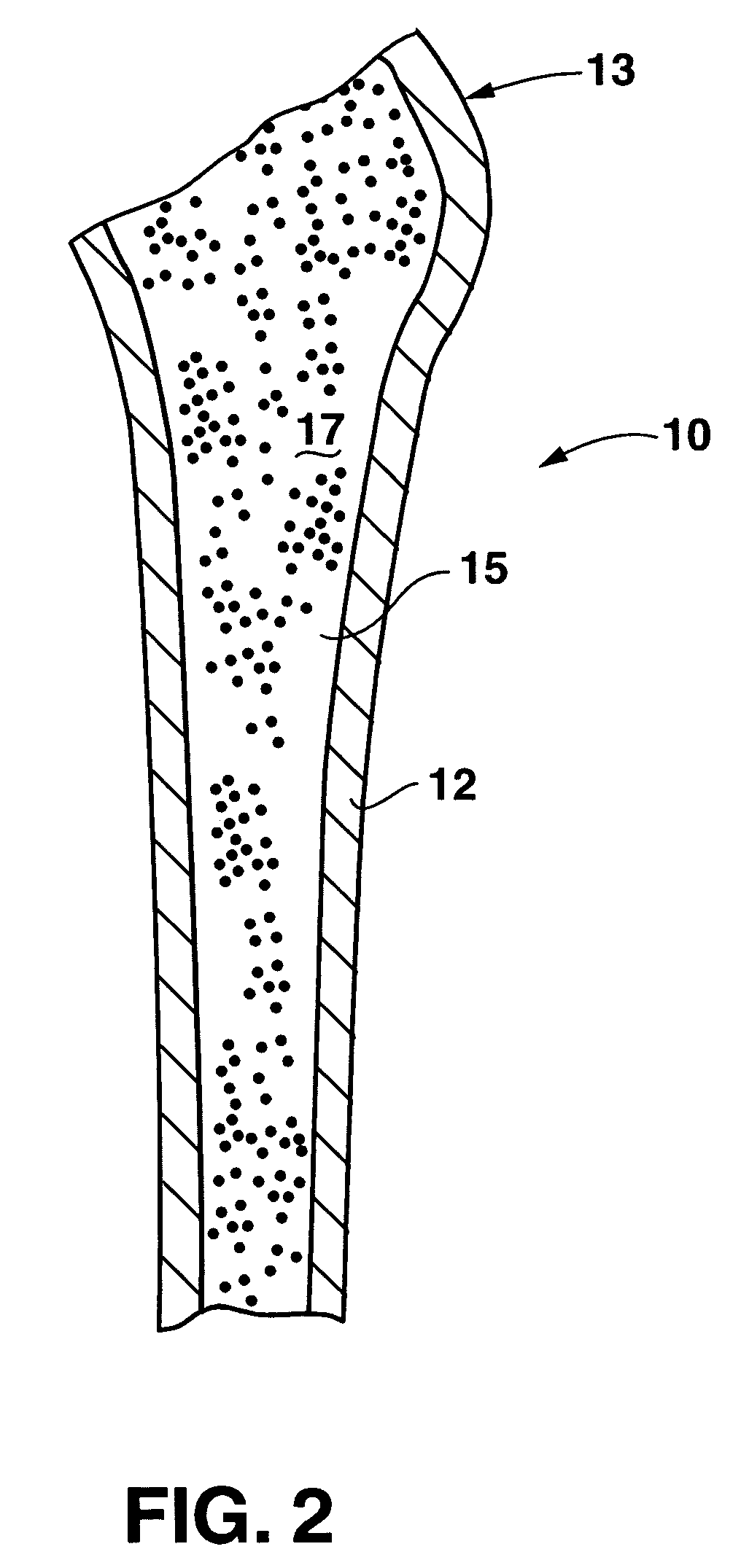Bone preserving total hip arthroplasty using autograft
a total hip arthroplasty and autograft technology, applied in the field of total hip arthroplasty, can solve the problems of increasing the risk of damage to the remaining femoral cortical bone, inability inability to solve the problem of how to handle primary hip patients,
- Summary
- Abstract
- Description
- Claims
- Application Information
AI Technical Summary
Benefits of technology
Problems solved by technology
Method used
Image
Examples
Embodiment Construction
[0025]With respect to the above-referenced Figures, an exemplary method of performing a THA that meets and achieves the various objects of the invention set forth above will now be described.
[0026]As mentioned above, the use of tamps to pack a graft material into the intramedullary canal of a femur is known. However, such processes have been typically used in revision applications where there is no longer any cancellous bone within the intramedullary canal of the femur.
[0027]I have discovered various problems with these prior art methods.
[0028]I. Prior Art Methods do not Resolve the Issue of How to Handle Primary Hip Patients.
[0029]While ways of improving revision surgeries are welcome, it would be much more beneficial if the primary surgery can be performed in such a way that if and when the revision surgery needs to be performed, the revision surgery itself will be less risky to the patient with more available tissue and bone for the surgeon to work with.
[0030]For example, traditi...
PUM
 Login to View More
Login to View More Abstract
Description
Claims
Application Information
 Login to View More
Login to View More - R&D
- Intellectual Property
- Life Sciences
- Materials
- Tech Scout
- Unparalleled Data Quality
- Higher Quality Content
- 60% Fewer Hallucinations
Browse by: Latest US Patents, China's latest patents, Technical Efficacy Thesaurus, Application Domain, Technology Topic, Popular Technical Reports.
© 2025 PatSnap. All rights reserved.Legal|Privacy policy|Modern Slavery Act Transparency Statement|Sitemap|About US| Contact US: help@patsnap.com



